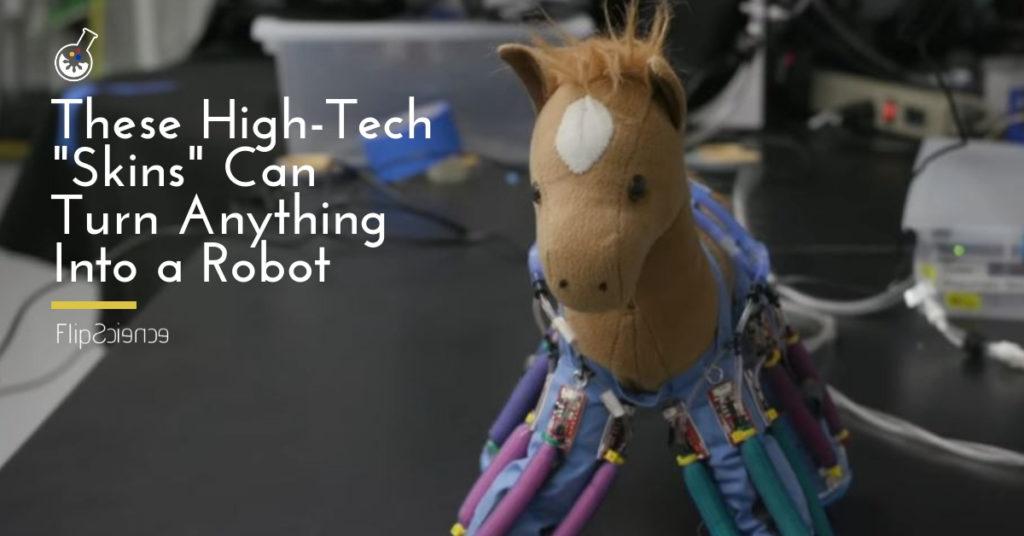It’s a concept straight out of a science fiction novel: skins that can wrap around any inanimate object, transforming it into a robot that can help you conquer the world, make you a cup of coffee, or even just run around in circles aimlessly for your amusement.
Led by Rebecca Kramer-Bottiglio, researchers from Yale University embedded elastic sheets with sensors and actuators developed in Kramer-Bottiglio’s lab. These “robotic skins” can wrap around a deformable object (such as a stuffed animal), allowing users to animate the object based on its properties.
“We can take the skins and wrap them around one object to perform a task — locomotion, for example — and then take them off and put them on a different object to perform a different task, such as grasping and moving an object,” said Kramer-Bottiglio, who works as an assistant professor of mechanical engineering & materials science.
“We can then take those same skins off that object and put them on a shirt to make an active wearable device.”
Mission skin-possible
Unlike typical robots that are built to work in a specific way, these devices allow for countless functional possibilities. Moreover, combining two or more skins in a single application results in more complex robots with multiple functions and capabilities.
“Now we can get combined modes of actuation — for example, simultaneous compression and bending,” explained Kramer-Bottiglio.
Using prototypes, the researchers demostrated how they can roboticize different objects in assorted ways. Attaching the skins to a stuffed horse’s limbs, for instance, enabled the toy to move, while another skin can correct a person’s poor posture when worn.
Skins-piration from space
A call from NASA for “soft robotic systems” inspired Kramer-Bottiglio to devise these robotic skins. She partnered up with the agency to develop these devices for space applications. She even designed them to be reusable and reconfigurable, in order to make astronauts’ tasks significantly easier.
“One of the main things I considered was the importance of multifunctionality, especially for deep space exploration where the environment is unpredictable,” said Kramer-Bottiglio.
The team will conduct further research to streamline the devices and make them 3D-printable. These skins can be useful in numerous practical applications, from quick repairs to search-and-rescue operations. Details about this neat new invention were recently published in Science Robotics.
Reference
- http://robotics.sciencemag.org/content/3/22/eaat1853
- https://www.sciencedaily.com/releases/2018/09/180919144918.htm
Author: Mikael Angelo Francisco
Bitten by the science writing bug, Mikael has years of writing and editorial experience under his belt. As the editor-in-chief of FlipScience, Mikael has sworn to help make science more fun and interesting for geeky readers and casual audiences alike.







